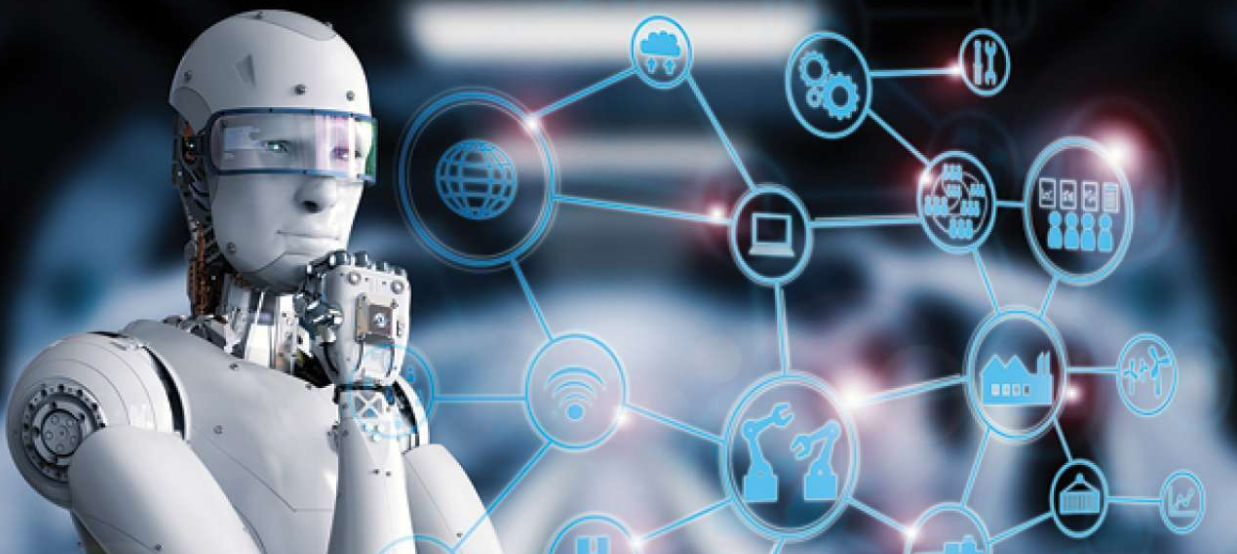The Role of AI in Business
Artificial Intelligence (AI) is revolutionizing businesses across industries by automating tasks, improving decision-making, and driving innovation. Here’s how AI is transforming business operations and strategy:
1. Automation and Efficiency
- Process Automation: AI can automate repetitive tasks such as data entry, invoice processing, and customer support, reducing human error and freeing up employees for higher-level tasks.
- Robotic Process Automation (RPA): AI-driven RPA automates routine business processes such as payroll, inventory management, and compliance tasks, leading to cost savings and increased productivity.
Example: AI chatbots and virtual assistants automate customer service, providing 24/7 support and resolving common queries without human intervention.
2. Data-Driven Decision Making
- Predictive Analytics: AI analyzes large datasets and uncovers patterns and trends that help businesses predict future outcomes, such as customer behavior, sales forecasts, and market trends.
- Real-Time Insights: AI systems can process real-time data to provide actionable insights, enabling businesses to make informed decisions faster.
Example: Retail companies use AI to predict inventory needs, ensuring the right products are available at the right time, reducing stockouts and overstocking.
3. Personalization and Customer Experience
- Personalized Marketing: AI helps businesses deliver highly personalized marketing messages to customers by analyzing their preferences, browsing behavior, and purchase history.
- Enhanced Customer Interaction: AI chatbots, recommendation engines, and voice assistants can engage with customers more effectively by providing personalized product recommendations, targeted offers, and seamless support.
Example: E-commerce platforms like Amazon use AI-driven recommendation engines to suggest products tailored to individual customers, increasing sales and customer loyalty.
4. Cost Reduction
- Operational Efficiency: AI reduces operational costs by optimizing supply chains, automating administrative tasks, and improving resource allocation.
- Maintenance and Repairs: AI-powered predictive maintenance helps identify potential equipment failures before they occur, reducing downtime and repair costs.
Example: Manufacturing companies use AI to monitor machinery in real-time and predict failures, ensuring proactive maintenance, which reduces costly breakdowns.
5. Improved Security
- Cybersecurity: AI enhances cybersecurity by detecting and mitigating potential threats faster than traditional methods. AI-powered systems can identify patterns that indicate a security breach or fraud and respond in real time.
- Fraud Detection: In sectors like banking and e-commerce, AI is used to detect suspicious transactions and prevent fraud by analyzing user behavior and transaction patterns.
Example: Banks use AI to monitor transactions for unusual activity, reducing fraud and enhancing the security of financial transactions.
6. Human Resources and Talent Management
- Recruitment and Talent Acquisition: AI tools streamline the recruitment process by screening resumes, matching candidates to job descriptions, and identifying the best-fit candidates based on skillsets.
- Employee Retention: AI-powered tools can analyze employee performance and engagement, helping businesses identify potential issues and improve employee retention strategies.
Example: AI-driven HR software helps automate the initial stages of recruitment, reducing the time and resources spent on hiring.
7. Supply Chain and Inventory Management
- Demand Forecasting: AI can predict demand fluctuations, enabling businesses to optimize their supply chains, reduce waste, and ensure timely delivery of goods.
- Inventory Management: AI systems track inventory levels in real-time, reducing overstocking or understocking, and automating reordering processes based on predictive analytics.
Example: Retailers like Walmart use AI to optimize supply chain logistics, ensuring the efficient distribution of goods and minimizing delivery times.
8. Sales Optimization
- Lead Scoring and Prioritization: AI can analyze customer interactions and behaviors to score leads, allowing sales teams to focus on the most promising prospects.
- Sales Forecasting: AI tools predict future sales trends by analyzing historical sales data, customer interactions, and market conditions, improving sales planning and budgeting.
Example: CRM platforms like Salesforce integrate AI to help sales teams prioritize leads and opportunities, improving conversion rates and sales efficiency.
9. Product Innovation
- AI-Driven Design: AI is being used to enhance product design by analyzing user data, preferences, and market trends. This allows businesses to create products tailored to customer needs.
- New Business Models: AI enables the development of new business models by creating innovative products, such as autonomous vehicles, AI-powered healthcare devices, and smart home technology.
Example: In the automotive industry, companies like Tesla use AI for self-driving cars, transforming traditional business models in transportation.
10. Financial Management
- AI in Accounting: AI-powered tools automate accounting tasks such as bookkeeping, invoice processing, and tax filing, reducing errors and increasing efficiency.
- Risk Management: AI can assess financial risk by analyzing market trends, economic data, and historical performance, providing businesses with better risk management strategies.
Example: Financial institutions use AI to assess credit risk, detect fraudulent transactions, and automate financial reporting.
11. Healthcare and Life Sciences
- Improved Diagnosis and Treatment: AI is used to analyze medical data and assist in diagnosing diseases, developing treatment plans, and even predicting patient outcomes.
- Drug Discovery: AI accelerates the drug discovery process by analyzing large datasets of chemical compounds and identifying potential treatments.
Example: AI-powered diagnostic tools help radiologists detect diseases like cancer in medical images faster and more accurately than traditional methods.
12. Customer Service
- AI-Powered Virtual Assistants: AI chatbots and virtual assistants provide instant responses to customer inquiries, helping businesses manage high volumes of customer interactions efficiently.
- Sentiment Analysis: AI systems analyze customer feedback and reviews, helping businesses understand customer sentiment and make improvements to products or services.
Example: Airlines use AI chatbots to help customers with flight bookings, cancellations, and status updates, improving the overall customer experience.
Conclusion
AI is a powerful tool that enhances business operations by improving efficiency, reducing costs, and driving innovation. Whether through automating tasks, providing data-driven insights, or creating personalized customer experiences, AI enables businesses to stay competitive in a rapidly evolving marketplace. Embracing AI is essential for companies looking to scale, optimize, and innovate in the digital age.






